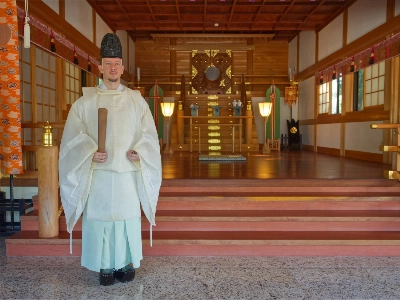Two weeks ago, on the same day that it didn't cover the huge anti-nuclear power demonstration in Tokyo, NHK's 7 o'clock news bulletin had a feature about Daihatsu's new small car, the Mira e:s (pronounced "ease"). Initially, we saw the report as further proof of the public broadcaster's retreat from its traditional aversion to anything smacking of commercial promotion; but in the days since then we've come to realize that the announcement was newsworthy as more than just a financial story.
The e:s is the latest model in the Mira K-car series. K-car, as in kei (light), are automobiles made specifically for the Japanese market. The name refers to the engine displacement, which is only 660 cubic centimeters. Consequently, the weight and size are smaller than standard automobiles, which is why many people believe them to be unsafe. Because K-cars are very small and have to be lightweight, they tend to crumple easily in accidents. But they are also low-priced and get high gasoline mileage. What makes the e:s noteworthy is its even lower price--¥795,000--and even higher gas mileage--30 kilometers per liter based on JCO8 mode testing methodology. That's almost a 40 percent improvement in mileage over previous Mira models owing to e:s's lighter body structure and smoother transmission function. As a result, Daihatsu is marketing it as the "third eco car" after the all-electric vehicle and the hybrid. For comparison, Toyota's best-selling Prius hybrid gets 32. 6 km/l and Honda's Fit hybrid 26km/l.
Daihatsu hopes to sell 10,000 e:s per month, which seems quite feasible since Daihatsu is already the number one maker of K-cars in Japan (but not K-trucks). The company unloaded 341,000 during the first eight months of the year, though one of the main reasons for the robust sales was the March 11 disaster. K-cars are particularly popular in rural areas, where automobiles are a necessity and many families own more than two. Because people use them every day and for every sort of task, economy is the main consideration. Not only do they use less fuel, but the excise/weight taxes and insurance are much cheaper (though they are subject to a special Light Motor Vehicle Tax), maintenance costs are lower and owners in rural areas usually aren't required to offer proof of a parking space for K-cars at the time of registration. According to the Japan Mini Vehicles Association, 43 percent of the automobiles registered in the Tohoku region before the March 11 disaster were K-cars. In the prefectures that align along the Japan Sea, the portion of K-cars often tops 50 percent, and in Okinawa it's 53 percent. Many automobiles were destroyed in the earthquake and tsunami, and the demand for used cars, used K-cars in particular, soared as a result. A friend of ours who lives in Osaka just sold her 10-year-old K-car to a broker for ¥50,000. Usually with a car that old the owner has to pay the broker to haul it away.


















With your current subscription plan you can comment on stories. However, before writing your first comment, please create a display name in the Profile section of your subscriber account page.